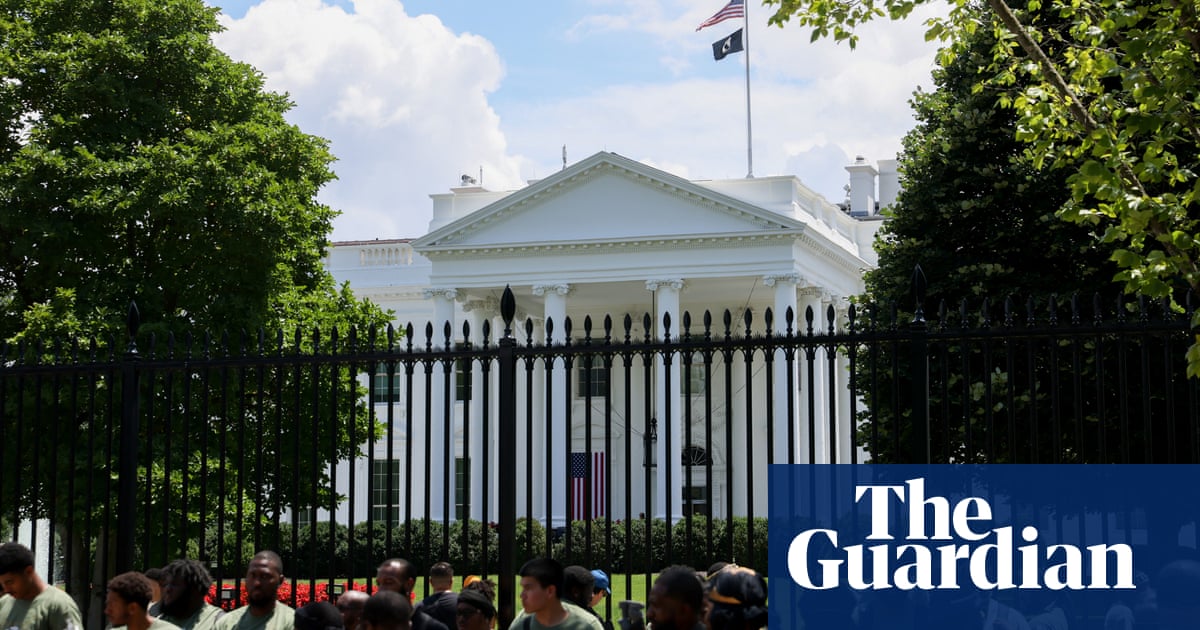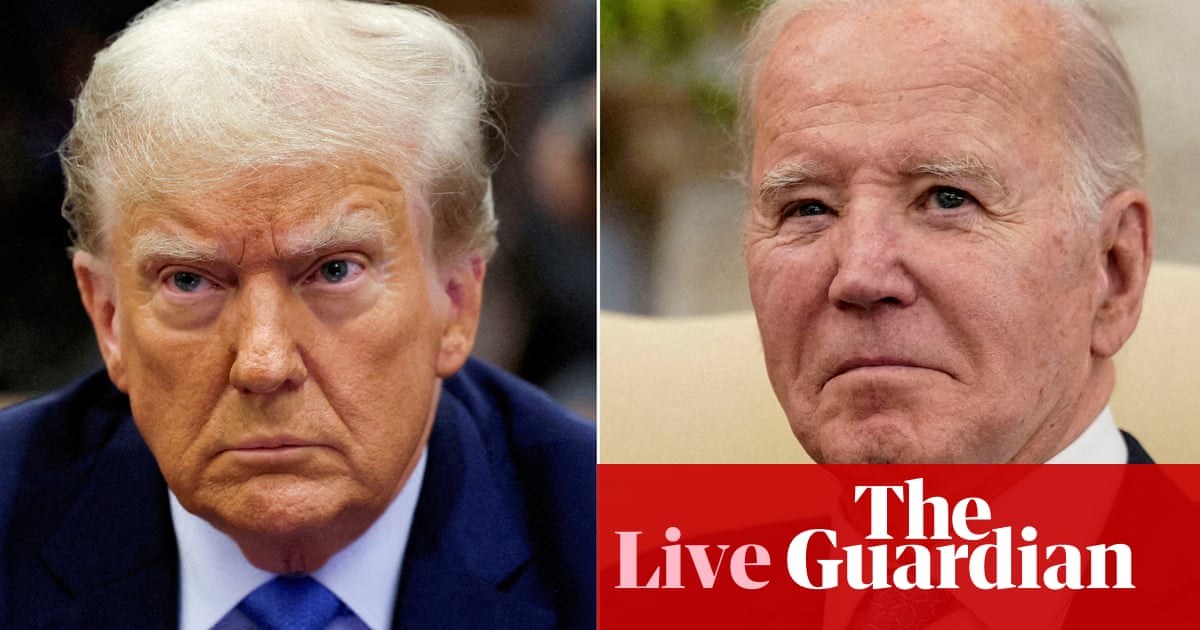
Biden listened attentively as she told him about surviving cancer and how the Affordable Care Act, which Biden helped push as Barack Obama’s vice president, saved her life
RACINE: Andrea Dyess, 57, was already a Joe Biden fan, but after meeting him in her neighborhood of Racine, Wisconsin, in May, she has been talking to anyone who will listen about giving him four more years in the White House.
Dyess was on a street corner with her two young grandchildren trying to catch a glimpse of Biden’s motorcade, when a campaign worker invited her to join the president at a nearby community center.
Biden listened attentively as she told him about surviving cancer and how the Affordable Care Act, which Biden helped push as Barack Obama’s vice president, saved her life.
“I told him, just keep fighting the fight,” she said,
Since then, Dyess says she has shared her “once in a lifetime moment” directly with dozens of friends and relatives, at a church revival, at her grandkids’ school and on her neighborhood walks. She’s also been urging her 20-year-old son’s friends to register to vote.
Campaign officials say the encounter is exactly what they are hoping to replicate around the country with a series of small-scale campaign events.
Biden, 81, has spent decades honing his ‘retail’ politician style of wooing voters. Big, thundering speeches have never been his style but he lights up when meeting people one-on-one, thumping shoulders, hugging strangers and FaceTiming people’s moms.
In sharp contrast to the
mass rallies
hosted by Republican rival Donald Trump — heavy on stagecraft with classic rock playlists, anti-immigration rhetoric and mostly white audiences — Biden meets with small, more diverse groups of voters for personal conversations.
Those
smaller events
are arranged with friendly invitation-only audiences, and often publicized only at the last minute to avoid pro-Palestinian protests that have dogged Biden’s appearances for months.
It’s part of a broader campaign strategy that includes celebrity endorsements, a slew of political surrogates, traditional ads and official events to showcase Biden’s support for NATO, infrastructure funding and other key policies.
The campaign is under heavy pressure as Biden wobbles in the polls.
Despite strong economic growth and stock market highs, his approval ratings are near two-year lows, a recent Reuters/Ipsos poll showed, and other polls show Trump ahead in several of the battleground states that Biden narrowly won in 2020.
Campaign and Democratic party officials say that is in part because voters are still smarting from higher prices and don’t know enough about what Biden has done to reduce costs of prescription drugs and other essentials, or his backing of unions fighting for higher wages.
They say US media is too “fractured” to be an effective way of reaching voters on these issues. So they’re enlisting friend networks, super-surrogates, small business groups, podcasts, new media and TikTok stars who they hope will talk issues and policies as they try to convince millions of Americans to back Biden in November.
Charles Franklin, who directs polling at Wisconsin’s Marquette University Law School, said that because Biden doesn’t have “groupies” like Trump, these smaller events are a better bet. “If they both got the same stadium and did back to back events, [I’m] pretty confident that Trump would have the bigger turnout for that,” Franklin said.
Republicans, who ridiculed Biden’s 2020 campaign for being run “from his basement,” say the lack of big Biden rallies in 2024 is further evidence of his physical and political fragility.
Trump spokesperson Karoline Leavitt, described Biden’s strategy as “tiny, staged, 15-minute snooze-fests,” and said “Team Trump’s campaign events will continue to get bigger and better.”
Before events like the one in Racine, the campaign combs its databases for local people who care about a specific issue Biden’s policies have addressed or are part of a demographic he hopes to reach, and invites them to meet Biden. Sometimes they find unexpected guests like Dyess.
The interactions are filmed by the campaign for YouTube video and campaign ads, and followed by local and national media. Ideally, participants make their own social media posts and those go viral, reaching more voters, the campaign says.
“One of the strategies around any visit is not just to have the perfect room and create the conditions for serendipity, but also to make sure that what happens in the room doesn’t stay in the room,” said Ben Wikler, head of Wisconsin’s Democratic Party.
In Milwaukee in March, for example, Biden met 9-year-old Harry Abramson, who had written to Biden about his stutter.
Biden, who stuttered as a child, shared his strategy for dealing with difficult words. The interaction was picked up by the local Fox affiliate and other TV stations, digital and print media, and Biden’s campaign put it on Facebook and other accounts. It went viral, bouncing around chat rooms, TikTok and Reddit.
“Grandpa’s gonna Grandpa. Imagine telling your friends you got speech lessons from the president of the United States,” one Reddit user wrote under a video of the interaction on “Made Me Smile,” a group with 9.5 million members.
Biden visited the Fitts’ family home in North Carolina in January, part of a ‘kitchen table’ visit to regular families in swing states. Afterward, teenaged Christian Fitts posted a video on TikTok showing the President admiring school photos on his refrigerator and sharing french fries at the kitchen table.
The post got over one million “likes” and thousands of comments that attracted millions more views. Many were incredulous, rather than outright endorsements of Biden. “HIM JUST STANDING AT THE FRIDGE IS SENDING ME” one user wrote. Nearly 50,000 people liked the comment.
Tracking the digital impact of this strategy is difficult, political experts say. New tools to track TikTok content are still not reliable, most Facebook posts are private, and there’s no way to know how many of those who comment will actually vote.
Teddy Goff, co-founder of marketing firm Precision Strategies, believes the smaller events are a smart play.
“They’re going to wind up in the local news, local newspaper, local TV, and in all likelihood, will get seen by more people than might have been to that Trump rally,” said Goff, digital director of former President Barack Obama’s 2012 reelection campaign, referring to an April rally by Trump in Green Bay that drew a crowd of 3,200.
Relying on individuals to share the Biden message can be unpredictable.
Sheree Robinson, a Black mother of five from Racine who says funding from Biden’s American Rescue Plan helped her earn her a High School Equivalency Diploma, was invited to ride in Biden’s limousine during his May Wisconsin visit.
She posted a video on Facebook showing her smiling next to a bemused-looking Biden, as he gets detailed instructions on what to expect at the next event. In her comment, she used an obscenity to tout herself as a “big ... deal,” without any praise of Biden.
Later, however, she called into a local radio program to share what she called an “awesome” experience, and plugged Biden’s policy that helped her get a degree. The Wisconsin Democratic party is featuring her in digital ads it will use around the state.
Social media tends to embrace more negative or awkward moments, like a stumble or fall, Goff noted, rather than a tiny event like the recent one in Racine.
Biden’s campaign is outspending Trump’s on digital media in Wisconsin, according to an analysis by Priorities USA. It spent $2.2 million on digital ads in the state alone since January, compared to $1,500 spent by Trump.
So far, though, a FiveThirtyEight compilation of Wisconsin polls still shows Trump with a slight lead in the state.












